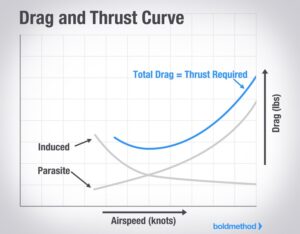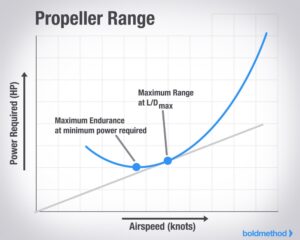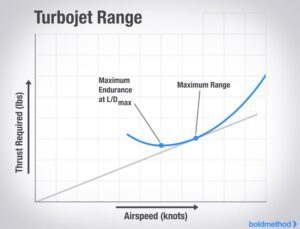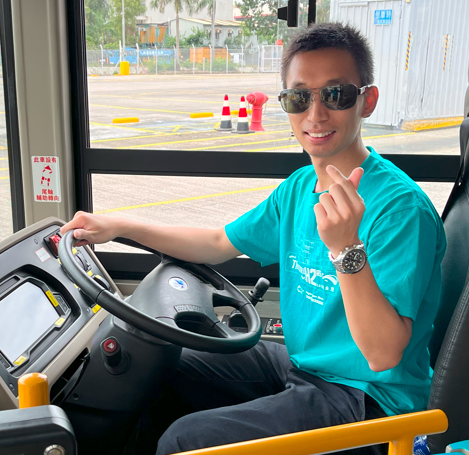Maximum Distance v.s Maximum Endurance
星期六…下雨天…今日不做運動就又溫下書…每日一點點麻 …
Best distance speed (Maximum distance speed)
No matter we use distance and range to describe how far the aircraft can fly, we are literally talking about the horizontal distance that the aircraft can cover.
Best Glide Speed? (Best Range speed when losing engines)
When the aircraft lost its engine(s), the speed and configuration that will get you the most distance forward for each increment of altitude lost. That’s best glide speed.
In my own words, you trade vertical distance for horizontal distance, and the speed that you can fly most further, that’s the best glide speed.
Best glide speed will be roughly halfway between Vx (best angle of climb speed) and Vy (best rate of climb speed).
Best glide speed is proportional to weight!
best glide speed will be a little lower for lower aircraft weights.
Best Endurance speed? (Minimum Sink Speed when engines failure)
Best endurance speed is rarely found in Pilot Operating Handbooks, but it will be a little slower than maximum glide range speed.
Simply speaking, we tend to land the aircraft as soon as possible in the event of engine failure, so we usually emphasise on best glide speed instead of best endurance speed during engine failure.
https://youtu.be/pGd7wem46_s?si=1uz_YUjd-Brjrmg4
What about in engine running condition?
Best Range – tangent of engine output curve
Best Endurance – minimum engine output required (thrust curve or power curve)

Minimum drag speed is called Lift / Drag Max, or L/D max. It’s where induced drag equals parasite drag. It is the so called best glide speed.
However, when the engines are normally running, we look into the engine output curve (i.e the thrust curve or power curve, depending on the type of engine)! The tangent point is the so called maximum range speed.
Differences between propeller and turbine engine?
Thrust and power are not the same thing.
We must have this concept at the beginning!
Thrust is a pure force;
Power is the product of force and velocity.
(Power = Force * Velocity)
The turbine jet engines produce thrust ;
Reciprocating engines and turboprops do not directly create thrust. Instead, they spin a shaft. The more fuel they burn, the faster the shaft spins. So, the faster they spin the shaft, the more velocity it has, the more power they generate. Of course, the shaft connects to a propeller, and the propeller creates thrust.
It is also why we have throttle levers or power levers on the aircraft with reciprocating engine;
However, we called thrust levers for aircraft with turbine jet engines


From the diagrams, we can see that for propeller type aircraft (with reciprocating engines), the maximum range speed at L/Dmax. In contrast, the maximum range speed on aircraft with turbine engine is much higher than L/D max speed.
Thrust Engine v.s Power Engine
More references
https://www.faa.gov/sites/faa.gov/files/2022-01/Best%20Glide%20Speed%20and%20Distance.pdf
https://www.boldmethod.com/learn-to-fly/aerodynamics/best-range-speed-prop-vs-jet/
Calendar
| S | M | T | W | T | F | S |
|---|---|---|---|---|---|---|
| 1 | 2 | 3 | ||||
| 4 | 5 | 6 | 7 | 8 | 9 | 10 |
| 11 | 12 | 13 | 14 | 15 | 16 | 17 |
| 18 | 19 | 20 | 21 | 22 | 23 | 24 |
| 25 | 26 | 27 | 28 | 29 | 30 | 31 |
Archives
- December 2025
- November 2025
- October 2025
- September 2025
- August 2025
- July 2025
- June 2025
- May 2025
- April 2025
- March 2025
- January 2025
- December 2024
- November 2024
- October 2024
- September 2024
- August 2024
- July 2024
- June 2024
- May 2024
- April 2024
- March 2024
- February 2024
- January 2024
- December 2023
- November 2023
- October 2023
- September 2023
- June 2023
- May 2023
- April 2023
- March 2023
- July 2022
- May 2022
- April 2022
- August 2021
- April 2021
- March 2021
- February 2021
- December 2020
- November 2020
- October 2020
- September 2020
- August 2020
- July 2020
- June 2020
- May 2020
- April 2020
- March 2020
- February 2020
- January 2020
- December 2019
- September 2019
- June 2019
- May 2019
- April 2019
- March 2019
- February 2019
- January 2019
- December 2018
- November 2018
- October 2018
- July 2018
- June 2018
- May 2018
- April 2018
- March 2018
- February 2018
- January 2018
- December 2017
- November 2017
- October 2017
- September 2017
- June 2017
- March 2017
- January 2017
- December 2016
- August 2016
- July 2016
- June 2016
- May 2016
- April 2016
- March 2016
- January 2016
- December 2015
- November 2015
- October 2015
- September 2015
- March 2014
- September 2013
- August 2013
- March 2013
- September 2012
- August 2012
Categories
- AFTC training
- AGK – Airframe, Engine, System
- AGK – Instruments
- ATPL Knowledge
- Aviation
- Aviation English
- BAK
- BC Life in CTB
- Book Sharing
- Books of OSH
- Cathay Pacific
- CNY Trip 2019
- CNY trip 2020 (Malaysia)
- Coffee
- Communication
- Corporate Governance
- English Learning
- Environmental Management
- ERM (enterprise risk management)
- Excel
- First Step Summit
- Flight International (Magazine)
- Flight planning and Monitoring
- HKMA ADMS
- Human Performance and Limitations
- Introduction to OHS
- IT
- Korea Trip 2019
- Learn from aviation accident
- Legislative Context in OHS
- London + Paris 2013
- Macau @ Trip 2017
- Meteorology
- Microsoft Windows
- MOLDOVA CHALLENGE
- My Diaries
- My Travels
- Navigation
- Occupational Health and Safety (OSH)
- Operational Procedures
- Operations Management
- Organizational Behavior
- OSH English
- Power BI
- Preparation
- Principal of Flying
- Python
- Quality Management System (QMS)
- Radio Navigation
- Regulations, Rules and Practices
- Risk Assessment
- Road to be an airline cockpit crew
- Route Training
- Summer Trip 2018
- Taiwan trip 2016
- The life in VHHH
- The road to be a pilot
- The road to be a RSO
- Uncategorized
- Weight & Balance
- Wine
- 學車 in CTB
- 私牌系列
- 馬來西亞 (怡保+檳城) 2024
